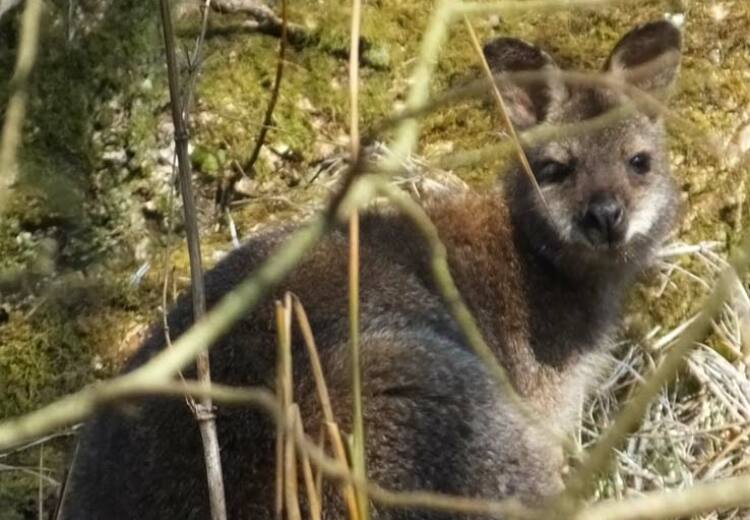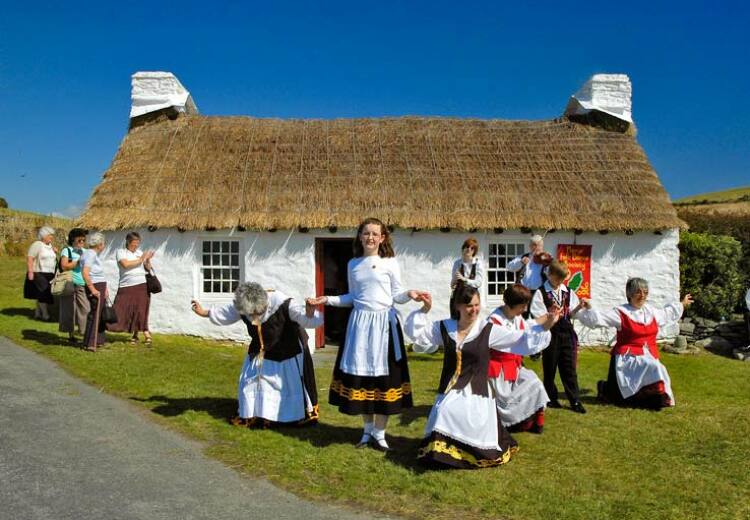The unusual sight of a large group of bottlenose dolphins near the Isle of Man this week may be further evidence that they are shifting their summer range northwards, says the marine conservation charity Sea Watch Foundation.
The Manx Whale & Dolphin Watch not only reported around 10 bottlenose dolphins in the north eastern part of the Isle of Man on May 19, but later the same day, a large group of 50-60 bottlenose dolphins, including young calves, off the eastern part of the Island.
Both organisations are calling for members of the public to send in photographs to photo@seawatchfoundation.org.uk of bottlenose dolphins off the Isle of Man or off the north east coast of England and the Galloway coast in the northeast Irish Sea, to see whether they can be matched with any known to frequent Cardigan Bay. Photographs need to show their fins side on which are used for ID in much the same way as fingerprints in humans!
Another interesting sighting - a group of 20 bottlenose sightings off Abbey Head, Dumfries and Galloway - was also reported to Sea Watch by Regional co-ordinator, Mark Pollitt, manager of the Dumfries and Galloway Environmental Recording Centre on 20 May. Photographs are again being sought to see whether these dolphins match records either from Cardigan Bay in Wales or form Scottish populations on the west and east coast.
Daphna Feingold, Sea Watch Monitoring officer for the Cardigan Bay bottlenose dolphin Photo ID Project, says: "There were also reports of Risso's dolphins in the Isle of Man area at the same time and of the two species swimming together. Although this is not unheard of, it is quite unusual in UK coastal waters.
"In recent years we have been noting what may be a shift in the Cardigan Bay population northwards, and we are concerned that this may be due to disturbance since recreational boating has increased and has been shown to have a negative effect on the animals."
Sea Watch is calling for added protection for bottlenose dolphins around the north coasts of Wales since these are being used extensively by bottlenose dolphins. Current conservation protection for the species exists in the Cardigan Bay Special Area of Conservation (SAC) and Pen Llyn a’r Sarnau SAC, but not further north.
Tom Felce, Manx Whale & Dolphin Watch, says: “There has been a clear increase in the number of sightings of bottlenose dolphins in Manx waters in the last two or three years, with sighting numbers increasing from around 15 sightings a year, to around 40 or 50 sightings a year. The majority of these sightings are in the winter months, between October and March, so a sighting of such a large group towards the end of May is particularly significant.”
Manx fisherman Danny Kermeen, who reported the initial sighting of ten individuals, has been catching lots of herring in the north of the island which may be the reason that the bottlenose dolphins are in the area at this time of year, as herring do not normally reach the north east of the island until October or November. However, since herring eat sand eels, it may also be those that are attracting the bottlenose dolphins
Find out more about Sea Watch and how to take part yourself in National Whale and Dolphin Watch from 27July - 4 August via www.seawatchfoundation.org.uk and help protect the UK’s whales and dolphins by adopting a Cardigan Bay dolphin on www.adoptadolphin.org.uk.
FOR FURTHER INFORMATION ABOUT SEA WATCH FOUNDATION AND NATIONAL WHALE AND DOLPHIN WATCH OR FOR PICTURES PLEASE CONTACT: Wendy Necar 01926 421679, 0797 3523168 or email wendy.necar@seawatchfoundation.org.uk








